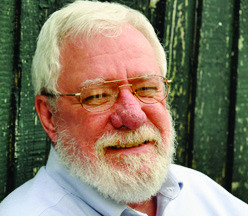Bradshaw
The children’s celebration of Mardi Gras in Church Point in the 1920s and 1930s seemed more like Halloween than the rowdy courir we know today, according to the memory of Marie Louise LaCaze. She put down her reminiscences in 1998 as part of a “life and letters” program at UL. In the course, persons of a certain vintage were encouraged to record their memories and life experiences.
“As I was growing up in Church Point,” Marie wrote, “we little girls who lived in the area between Main Street, Eby Street, and the street that bordered the school, had our own unique way of celebrating Mardi Gras.

Bradshaw
“On the Saturday preceding Mardi Gras, we would mask and dress up in whatever our mothers could rig up. After gathering at one of the homes, we would go house to house, knocking on doors demanding ‘cinq sous! cinq sous!’
“Neighbors always greeted us pleasantly. ... The person ... answering the door would invariably attempt to identify each one of us. Our group would lapse into giggles. Those ... who answered the door would give us either a nickel or an egg (which could be turned into cash).”
The girls took their treasure to Alsace Sonnier’s store on Main Street “to invest our treasury of nickels and eggs in cookies and treats.” Mr. Sonnier — as did practically every merchant in those days, threw in a little “lagniappe” to complete the day’s haul.
“Following the tradeoff, we would gather in one of our homes for a party or to enjoy our treats with hot chocolate,” Marie recalled.
The eggs Marie and her friends brought to the store were a staple of barter in Church Point and around the area. I presume that the value of eggs changed from time to time and from store to store, depending on how many chickens there were in the neighborhood and who was doing the bartering, but if old tales can be believed it seems like some merchants took in more eggs than they did cash — at least in those long, lean months between harvests.
A lot of the eggs bartered in these parts eventually ended up in the hands of O.J. LeBlanc, an egg wholesaler whose business was at the corner of Garfield and Johnston Streets in Lafayette. He sent his trucks out to the country stores to buy the bartered eggs and distributed them to grocery stores in town.
When John Horecky started what became Church Point Wholesale Grocery in the early 1900s, the firm began buying chickens and eggs on a regular basis and at one point shipped a rail car load of eggs to New Orleans every two or three days. Like amounts of eggs were shipped from other places on the rail line, and even by other means before there were railroads.
In 1869 the New Orleans Picayune reported, “We know several persons who have made fortunes from the traffic in the small matter of poultry and eggs. We have generally two steamboats and sometimes three plying between Washington [in St. Landry Parish] and New Orleans … during the business season [carrying] as many as a thousand dozen eggs … per week.”
A 1904 newspaper account reported that some 18,000 cases of eggs (at 50 pounds of eggs per case) were shipped from the railroad depot in Rayne alone. Emile Daboval Jr. of Rayne invented a special container made of straw and wood pulp to ship them in. That was a much-needed device. A study by federal farm authorities about that time found that poor packaging was as much a cause as rickety rails for broken eggs.
Besides being an innovator, Daboval was a civic and business leader in Rayne. The Opelousas Courier reported a visit to that town in 1897 by, “Hon. Emile Daboval, Jr., the mayor of the thriving town of Rayne and proprietor of the big Rayne Rice Mill,” and in 1908, when he and his wife, the former Lydia Rose Deynoodi of St. Charles Parish, celebrated their 25th wedding anniversary, the news paper recorded that their 14 children gathered “at their beautiful home on Louisiana Avenue” to toast “the prominent couple.”
You can contact Jim Bradshaw at [email protected] or P.O. Box 1121, Washington LA 70589.

